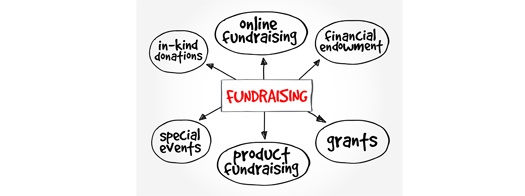
Two new nonprofit funding techniques that raise vast sums of money with little personal contact are replacing direct mail appeals, newsletters, and person-to-person interactions like house parties, luxury auctions, and gala events. Although these new funding methods illicit donations from huge donor pools, they contain hidden pitfalls that can leave nonprofits under-funded.
- CROWDFUNDING
The Opportunity:
Internet crowdfunding techniques raised $17 billion in America in 2015 and an unbelievable 22% of Americans contributed to crowd-sourced online projects. Field leader, GoFundMe, has topped $3 billion since it was launched in 2010. Since online funding does not respect national borders, the $32 billion worldwide figure for online fundraising in 2015 is an even more telling indicator of the power of so-called crowdfunding.
The Pitfall:
Established nonprofit agencies are not always the best candidates for crowdfunding. Nonprofit DNA says: “We’re experts. Trust us, give us money and we’ll do the work.”
The premise of crowdfunding starts from the exact opposite point-of-view. Crowdfunding DNA says: “The beneficiary needs help now, and they will spend your money immediately on their needs.”
In crowdfunding campaigns, givers are often responding to an emotional appeal to help alleviate someone’s immediate suffering not the broader societal problem that the suffering represents. For the most part, nonprofits trade in broader societal problems and can utilize online fundraising successfully only in select instances.
-
DONOR-ADVISED FUNDS
The Opportunity:
A donor-advised fund, or DAF, is a philanthropic vehicle established at a public charity. It allows donors to make a charitable contribution, receive an immediate tax benefit, and recommend grants from the fund over time.
In a stunning upset, after years of rapid growth, the donor-advised arm of a commercial, privately held, multi-national financial services firm surpassed the United Way as the top nonprofit fundraiser in the United States. The share of giving directed to similar DAFs tripled between 2009 and 2015. Sophisticated donors are taking advantage of this ongoing tax advantaged environment that enables them to deposit vast sums of tax free donations before they have decided how their donation will be used by the nonprofit.
The Pitfall:
The vast sums deposited in donor-advised funds are not immediately available for nonprofit use. This delay between donation and use distorts the fundraising picture and can be misleading when analyzing a nonprofit’s financial condition. Often the balance sheet can appear well-funded while the nonprofit runs short of operating cash. This can, and has, led to serious miscalculation on the part of nonprofit management.
BOLD BUT CAUTIOUS
Fundraising for nonprofits is entering a new high-tech phase. Barrack Obama won the Presidency twice through crowdfunding. The entire Arab Spring revolution that has rocked the world order utilized cell phone technology to organize entire populations around a common ideal. There is little doubt that nonprofit fundraising must learn how to use the new tools that are changing the social order.
However, one size does not fit all. Fundraisers must choose carefully the funding method that best fits the size, the mission, and the financial structure of their agency. Step boldly but carefully into the modern age of nonprofit funding. Your caution will be rewarded.

